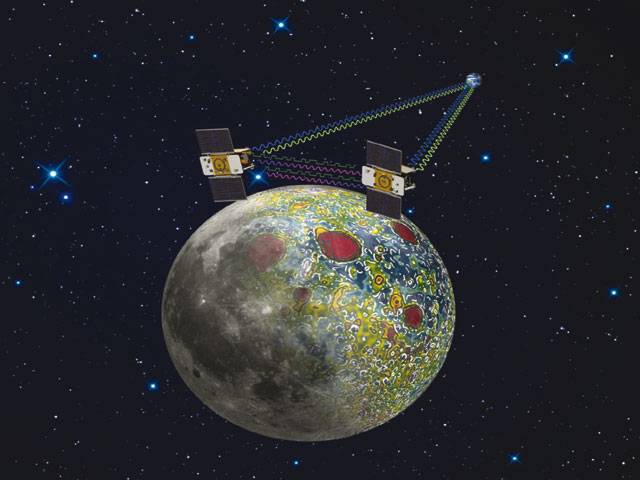WASHINGTON (AFP) - Twin NASA spacecraft are set to blast into lunar orbit at the weekend on a mission to study the subterranean structure of the Moon in order to better understand the origins of planets.
The first Gravity Recovery and Interior Laboratory (GRAIL-A) will begin orbiting the Moon at 2121 GMT on December 31, followed by GRAIL-B on January 1 at around 2205 GMT, NASA said in a statement.
“This mission will rewrite the textbooks on the evolution of the Moon,” said GRAIL head researcher Maria Zuber, of the Massachusetts Institute of Technology, adding that the spacecraft were thus far performing well. The $500 million pair of washing machine-sized satellites were launched on September 10 on a mission to map the Moon’s inner core for the first time.
Beginning in March 2012, the two unmanned spacecraft will send radio signals that allow earth-based scientists to create a high-resolution map of the Moon’s gravitational field, helping them to better understand its sub-surface features and the origins of other bodies in the solar system.
The mission should shed light on the unexplored far side of the Moon and test a hypothesis that there was once a second Moon that fused with ours.
The two spacecraft have taken three months to reach the Moon as opposed to the usual three-day journey taken by the manned Apollo missions. The longer journey allowed scientists to better test the two probes.
The two spacecraft have covered more than 2.5 million miles (four million kilometers) since they were launched in September, according to NASA.
As of Wednesday, GRAIL-A was 65,860 miles (106,000 kilometers) from the Moon and closing in at a speed of 745 miles (1,200 kilometers) per hour. GRAIL-B was 79,540 miles (128,000 kilometers) away at a speed of 763 mph (1,228 kph).
Scientists believe that the Moon was formed when a planet-sized object crashed into the Earth, throwing off a load of material that eventually became our planet’s airless, desolate satellite.
How it heated up over time, creating a magma ocean that later crystallized, remains a mystery, despite 109 past missions to study the Moon since 1959 and the fact that 12 humans have walked on its surface.
Sunday, May 05, 2024
Twin NASA probes approach lunar orbit

IHC disposes of FIA employees' petition against contract termination
4:57 PM | May 04, 2024
JUI-F decides to launch anti-govt movement sans PTI
4:57 PM | May 04, 2024
Pakistan, Niger reaffirm commitment to strengthen cooperation
4:56 PM | May 04, 2024
Dr Ahmar Sohail Basra assumes charge as Radio Pakistan Lahore station director
4:55 PM | May 04, 2024
Hearing against Ali Amin Gandapur adjourned until May 17
4:53 PM | May 04, 2024
Tourist Tragedy
May 04, 2024
Ending Polio
May 04, 2024
Will Justice Prevail?
May 04, 2024
Fair Play
May 03, 2024
Parliamentary Stalemate
May 03, 2024
Current state of affairs
May 04, 2024
Cryptocurrency revolution
May 04, 2024
The accessibility revolution
May 03, 2024
Maternal well-being
May 03, 2024
Tackling poverty
May 02, 2024
ePaper - Nawaiwaqt
Advertisement
Nawaiwaqt Group | Copyright © 2024





